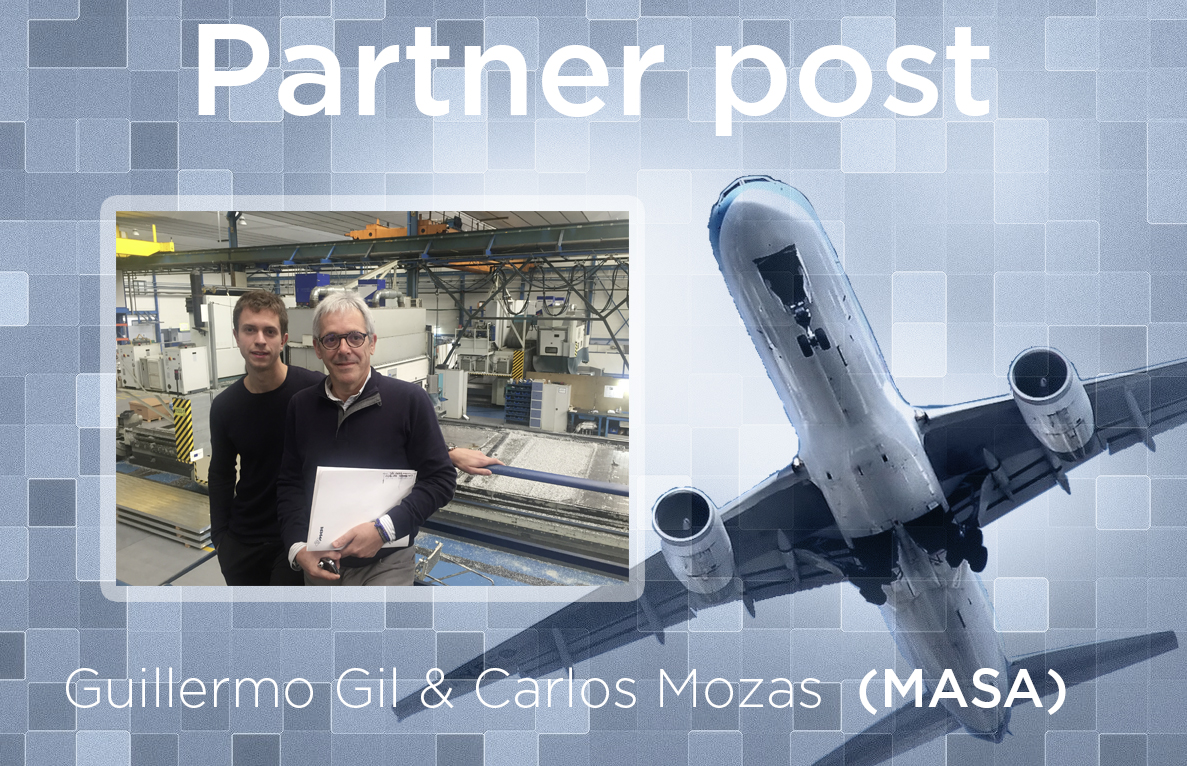An interview with Guillermo Gil and Carlos Mozas from MASA. Specialized in the manufacture of parts for the aerospace industry, project partner MASA will implement and test Twin-Control’s results.
How did you learn about the project? What aspects of the project attracted you to join it?
The main aspect of the project that attracted us was its future perspectives. Twin-Control will improve our production capacities, and it will not finish at the end of the project. With the knowledge acquired we will be able to carry out more efficient production plans, from the machines’ construction up to the total control of the manufacturing process.
Twin Control will provide us an important increase in competitiveness in terms of simulation, monitoring and predictive maintenance.
How is work carried out at your production plants on a daily basis?
Nowadays work is carried out in a simple way, the greatest advances have taken place in the scheduling and organization of the working plans.
Also, technologies has been improved with more advanced CNC programs and the increase of machines’ performance. Regarding the monitoring and control of the machining process, we carry out a very simplified methodology. Only the basic signals are monitored in order to control that the machine is working properly. In the case of test actions, we only realise them if important changes have happened in the machine.
How will Twin-Control improve production?
With Twin-Control we expect to change the answer to the last question. By monitoring all signals and doing the subsequent analysis, combined with simulation models, we hope to initially obtain improvement suggestions for the process, provided by the simulations, and we also hope to reach a more efficient machining process.
We especially expect to improve our capacities on issues related to predictive maintenance, one of the most important issues for us. A stopped machine has important consequences, and we hope Twin-Control will help us avoiding these situations.
Another important feature of Twin-Control is the Energy Efficiency Module, which will assess energy efficiency measures and predict the energy demand of each machine tool. In this manner we will be able to choose an energetically optimal machine configuration, as well as an efficient machining process.
For which processes will Twin-Control be used?
At first, Twin-Control will be used in our maintenance plan, providing a more efficiently and effective method of working to our operators, and reducing the non-working time of machines in case of breakage, since warning signals will inform us of possible malfunctions. Twin-Control will allow us to predict possible machine failures, acting in consequence. Smoothening the working process to avoid component breakage or an unexpected wear of the tool will improve our performance, in terms of improving machining time and reducing machine stops.
Last but not least, Twin-Control will be used in the machining process in order to obtain the maximum profitability and efficiency using different features from the monitored signals. One important problem in our machines are the overloads in the tool. Thanks to Twin-Control these will be controlled and predicted. If an unexpected overload takes place, we will be able to characterize the problem and know why it has appeared.
How do you see the future of machine tool simulation?
We see the future of machine tool simulation and prediction with the same perspective of the Twin-Control project. In the future, the simulation of all machining process’s conditions will determine the most important decisions that have to be taken with the purpose of reaching an efficient and successfully machining process.
A full knowledge of the interpretation of data provided by simulations will determine the future of machine tool companies.
We think that Twin Control is totally directed towards the future of the industry as we see it.

